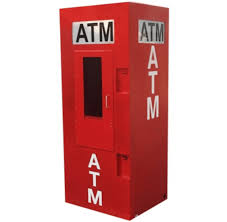
Automated Teller Machine
ATM Skimmers
skimming Scam Prevention Strategies:
- Use secure ATM machines – under video surveillance or inside of a bank lobby. They’re less likely to be tampered with. Thieves have to take more risk installing skimmers where there are security cameras.
- Cover the ATM keypad as you’re entering your PIN — just in case there’s a hidden camera around.
- Skimming devices will stick out a few extra inches from an ATM. If something looks suspicious, find another ATM. Don’t fall for a poor fitting device (or a sticker or sign that says “Swipe Here First”, or “Use This Machine Only”).
- If a machine keeps your card, call the bank immediately and report it.
- Don’t accept “help” from anybody hanging around the ATM machine. They may say they were having trouble also and you just need to enter your PIN again.
- Keep your eyes on your card if you have any doubts. Don’t let a merchant walk off with your card even for a few seconds.
Using the ATM
- When you are using the ATM and someone is closer to you than you would like them to be, ask them politely and tactfully to step back a few steps. If they do not do so, cancel your transaction and wait in your locked vehicle or other safe location until that person leaves or possibly go to another ATM.
- Before you approach the ATM, have your card ready, know your code and if anything such as a deposit slip needs to be filled out, have it completed. If making a deposit and you do not have a deposit envelope, obtain one from the storage section of the ATM and fill it out in your locked vehicle or other safe locations before you return to the ATM.
- Protect your Personal Identification Number (PIN). Memorize your PIN. Do not write your PIN on your ATM card or carry your PIN in your wallet or purse.
- Select a PIN that is different from other numbers noted in your wallet or purse, such as your address, birth date, telephone or social security number.
- When using the ATM, stand directly in front of the keyboard, blocking the view of others. Do not enter the PIN if anyone else can see the screen.
As remote as it may seem, criminals can use high-powered equipment to visually capture cardholder’s PIN’s as they are punched into keypads. By picking up discarded ATM transaction receipts, criminals can match up PIN’s and account numbers and have all the information they need to manufacture false ATM cards and gain access to consumer’s money. This is referred to as “shoulder surfing.”
- Never accept offers of assistance with the ATM from strangers. If you are having problems, contact your financial institution.
- When your ATM transaction is completed, immediately take your property card, receipt, money, etc., put them in your pocket, wallet or purse and leave immediately.
Never stand and count your money. You can count it later. If your transaction is inaccurate, you cannot discuss it with the machine. Thus, there is no need to count your money at the ATM and risk exposing yourself to a would-be criminal.
- ATM robberies often occur after the patron has completed their transaction. Always have your head up and be aware of your surroundings when you leave an ATM. If you feel or sense someone is following you, walk or drive to the nearest open business or where there are a lot of people and call the police.
Never tell your access code or PIN to anyone!
Never lend your ATM card to anyone; treat it like cash or a credit card.
- If you lose, misplace or have your ATM card stolen, notify the card issuer immediately. If you report an ATM card missing before it is used without your permission, the Electronic Fund Transfer Act (EFTA) says the card issuer cannot hold you responsible for any unauthorized withdrawals. If unauthorized use occurs before you report it, the amount you can be held responsible for depends upon how quickly you report the loss to the card issuer.
Besides all of the above-discussed ATM security measures, ATM users should use a machine that is placed in a well-lighted public place. According to Federal law, only the last four digits of the cardholder’s account number should be printed on the transaction receipt so that when a user leaves behind the receipt at the machine location, the account number still remains to be secured. However, it is still essential to hide the entry of your four-digit personal identification number (PIN) on the keypad and this can be done by positioning your body and hand in such a way that the PIN entered by you cannot be recorded by store employees or store cameras. The cardholder’s PIN is not recorded in the journal, but the account number gets recorded. Hence, if you protect your PIN, you automatically protect your account.



